17 Amazing Houseplants that Clean the Air
)
Many people think that air pollution only consists of smog or car emissions. While these do constitute as outdoor air pollution, there is a much more dangerous kind of air pollution known as indoor air pollution.
Indoor air pollution is more hazardous than outdoor air pollution because it is a more concentrated type of pollution that is caused by inadequate ventilation, toxic products, humidity, and high temperatures. Thankfully, numerous plants clean the air.
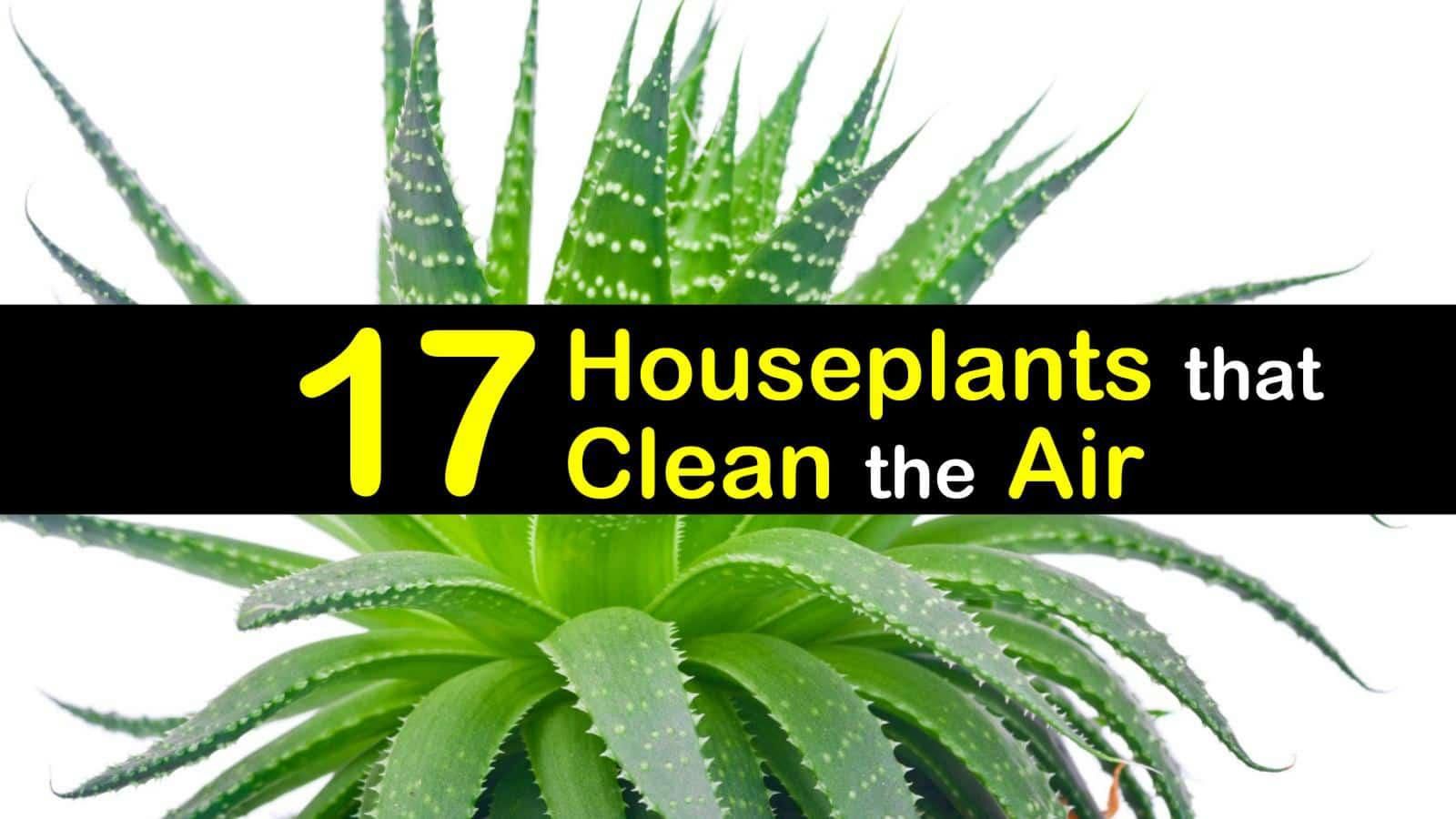
Houseplants often get overlooked in their ability to remove toxins and air pollutants from our homes. Bringing in air purifying plants is a cheap and easy way to improve the air quality of your home while bringing color and texture into your space.
Several plants will filter out volatile compounds like formaldehyde and benzene, significantly improving the indoor air quality in your home. Here are 17 plants that clean the air.
Aloe Vera
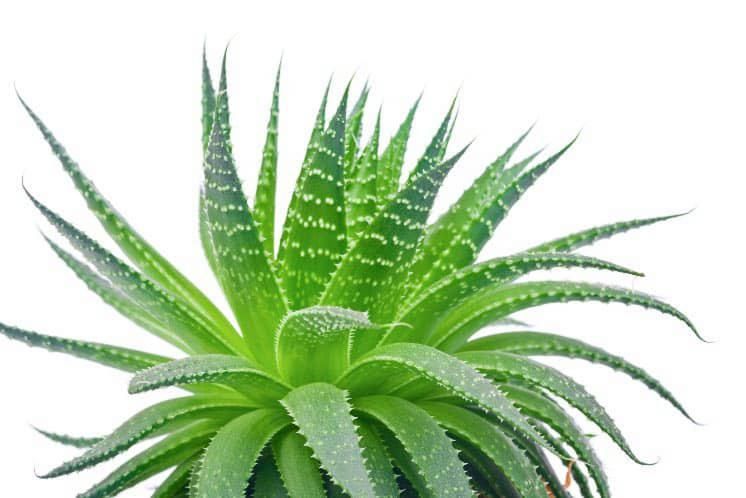
Aloe is an easy-to-grow succulent plant that helps to clear benzene and formaldehyde from the air.
The Aloe vera plant loves the sun, making a sunny kitchen window an excellent spot to place the plant. Along with removing air pollutants, this plant contains a gel that can help to heal burns and cuts.
Warneck Dracaena (Dracaena deremensis warneckii)

The warneck dracaena will combat air pollutants that are released by varnishes and oils.
They grow quickly indoors and thrive in any light. Known for its white stripes along the edge, it can become to be 12 feet high.
Snake Plant (Sansevieria trifasciata)
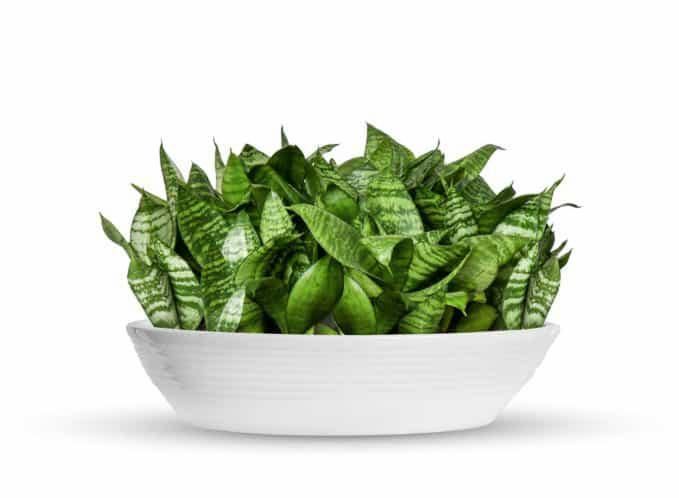
The snake plant is one of the best indoor plants for ridding your home of dangerous formaldehyde, a chemical used in cleaning products, tissues, toilet paper, and personal care items.
It thrives in low light, and humid conditions, so consider making it one of your bathroom plants. They are also known for absorbing carbon dioxide and releasing oxygen at night.
Golden Pothos (Scindapsus aureus)

One of the best houseplants for clean air, the golden pothos is a fast-growing plant that removes formaldehyde toxins. It is also one of those fantastic hanging plants for baskets.
These indoor plants need bright, indirect light to survive. To avoid root rot, make sure you don't overwater the plant.
Chrysanthemum (Chrysantheium morifolium)

These colourful Chrysanthemum plants can do more than just brighten a room with their vivid colours; they are also great for getting rid of indoor air pollutants.
They are mainly excellent at filtering out benzene, which is a common ingredient in paint, glue, plastics, and detergents. Place this plant in bright light to encourage the buds to open.
Red-edged Dracaena (Dracaena marginata)
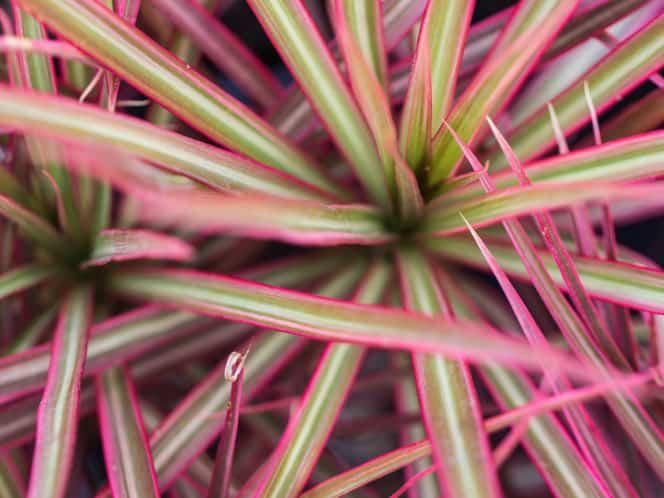
There are many varieties of dracaena plants, but this variety brings a pop of color to the plant with its red edges. It is best for removing trichloroethylene, xylene, and formaldehyde.
It is slow to grow but can reach heights of 15 feet, so you'll want to keep it in an area with high ceilings.
Weeping Fig (Ficus benjamina)
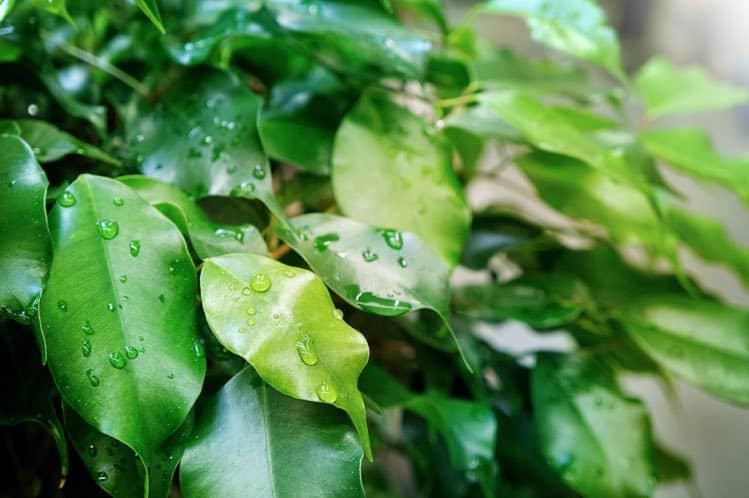
The weeping fig plant can help filter out numerous pollutants including benzene, trichloroethylene, and formaldehyde, toxins that you typically find in furniture and carpeting.
They can be tricky to grow and maintain but thrive in bright, indirect light.
Azalea (Rhododendron simsii)
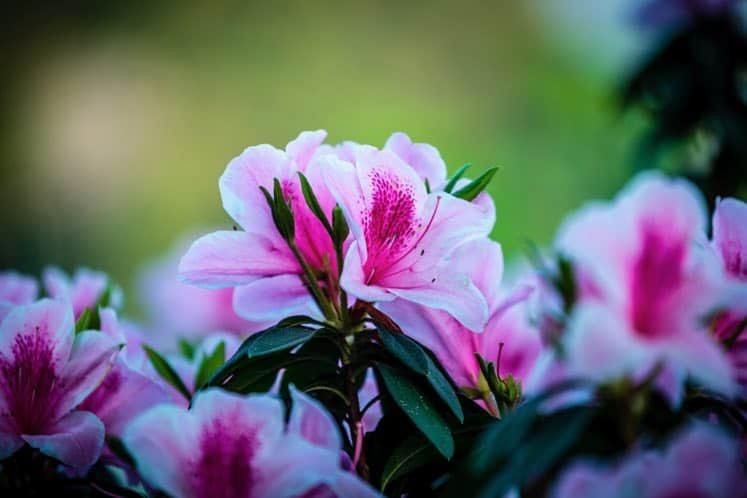
This beautiful flowering Azalea evergreen shrub will combat the formaldehyde found in foam insulation and plywood. They do best in colder temperatures and bright light.
To create a more humid environment for this plant, mist the plant every few days to keep the leaves moist. Remove any dead leaves that fall into the soil to help ward off disease.
English Ivy (Hedera helix)

According to a recent study, English ivy reduces airborne fecal-matter particles, as well as formaldehyde.
It is easy to care for and thrives in partial shade and fertile, moist soil. Once they become well established, they can tolerate dry conditions.
Chinese Evergreen (Aglaonema Crispum)
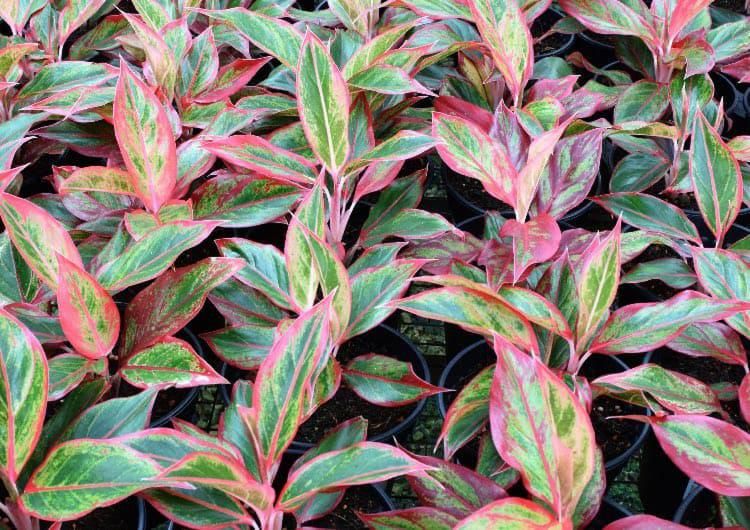
The Chinese evergreen is an easy plant to care for and can filter out many different air pollutants.
As time and exposure continue, it will keep removing more toxins from the air. It will produce beautiful blooms and berries, even in low light conditions.
Bamboo Palm (Chamaedorea sefritzii)
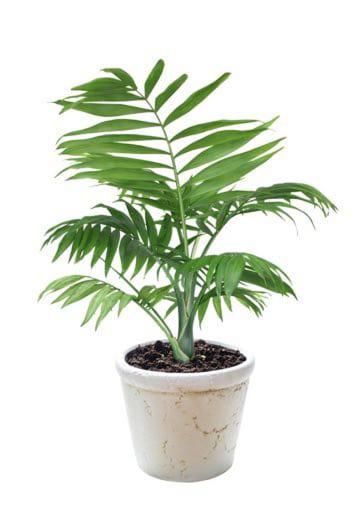
The bamboo palm, also known as the reed palm, is a small plant that thrives in shady indoor areas. It is one of the best indoor plants for removing trichloroethylene and benzene from indoor air, making it a great plant to place around furniture. It prefers, bright, indirect light, and thrives in areas of high humidity.
>> Further Reading: How to get rid of Spider Mites on your Plants
Heart Leaf Philodendron (Philodendron oxycardium)
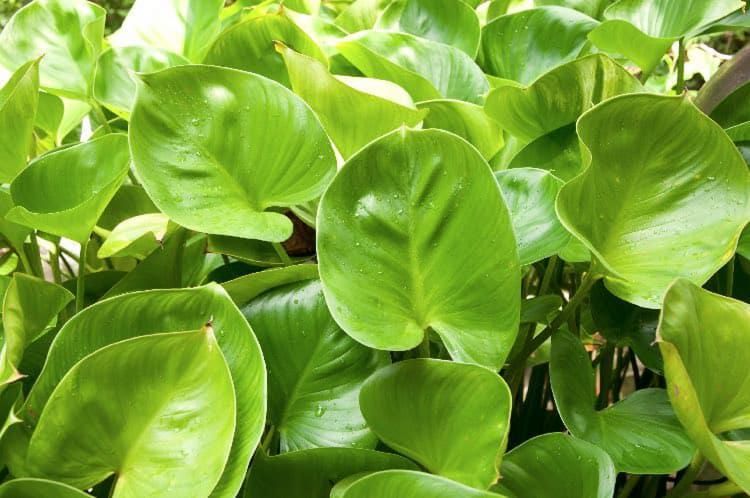
A climbing vine, the heart-leaf philodendron isn't a good option if you have pets or kids because it is toxic when eaten. The low-maintenance plants are ideal for removing various VOCs from the air, especially formaldehyde. They thrive in indirect sunlight and take little maintenance to survive.
Peace Lily (Spathiphyllum)

The peace lily only needs weekly watering and shade to thrive and produce beautiful blooms. These fragrant plants are ideal for removing formaldehyde, trichloroethylene, xylene, toluene, and benzene. They are very forgiving plants and easy to care for and maintain.
Spider Plant (Chlorophytum comosum)
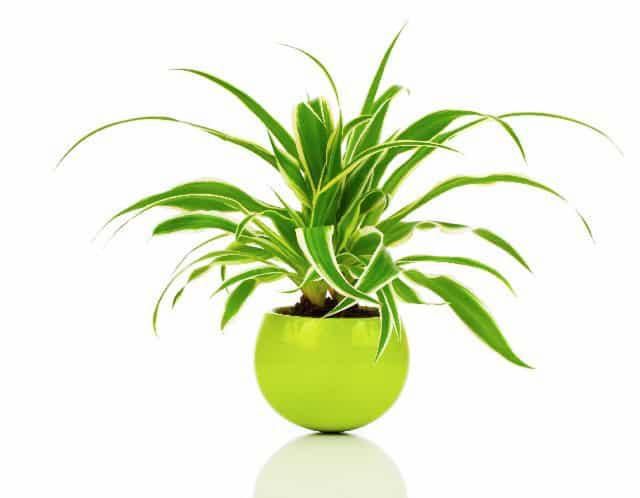
Even if you don't have a green thumb, you'll have a difficult time killing off this hardy houseplant.
The abundant foliage and small white flowers battle formaldehyde, carbon monoxide, benzene, and xylene, a solvent used in rubber, leather, and the printing industry. Spider plants are easy to grow and prefer cooler temperatures and dry soil.
Boston Fern (Nephrolepis exaltata)
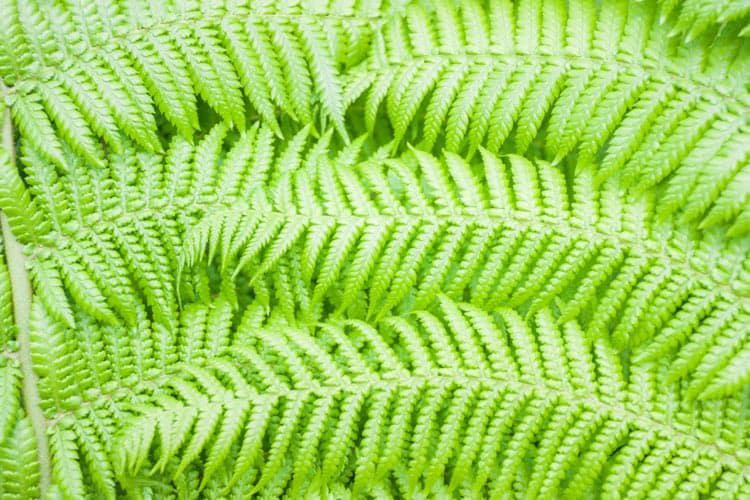
The Boston fern removes more formaldehyde from the indoor air than any other plant. They are also great for eliminating benzene and xylene, toxins that enter your home through the garage. Unfortunately, they can be finicky, requiring weekly watering during their growing season, and monthly watering in the winter.
Gerbera Daisy (Gerbera jamesonii)
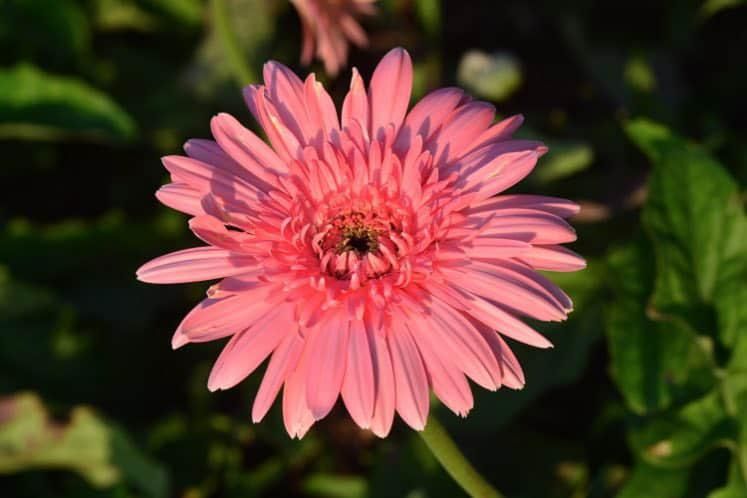
A brightly colored, flowering plant, the Gerbera Daisy is efficient at removing trichloroethylene, which is a common pollutant found in dry cleaning.
It loves the light and must have well-drained soil to survive. The cut blooms can last up to two weeks, continuing to rid the air of pollutants.
Rubber Plant (Ficus elastica)
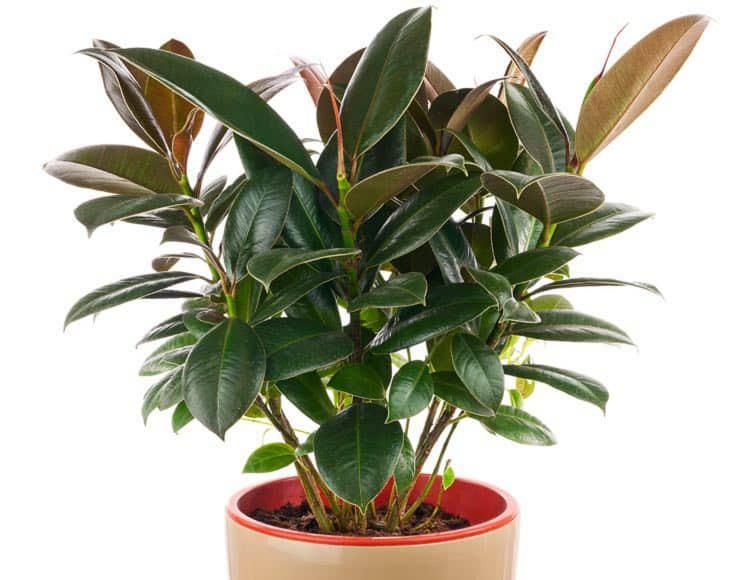
The rubber plant is at the top of the list for removing formaldehyde. The office is a great spot to place these plants because most office furniture is constructed of particleboard that is held together by formaldehyde-based glues. These rubber plants are slow growing and can survive in low lights.
While you can take steps to reduce the toxic chemicals in your home, by bringing in plants that clean the air you can remove some of the most toxic of these chemicals from your indoor air. Many houseplants are great for removing formaldehyde, a common toxic chemical that may cause cancer and triggers allergic reactions and asthma attacks. Not only do the plants listed here improve indoor air quality, but they also brighten up any room with vibrant colours and rich textures.

We hope you found this article helpful. If you enjoyed learning about the best plants for clean air, please feel free to share this article with all your family and friends.
Editior Tipsbulletin
